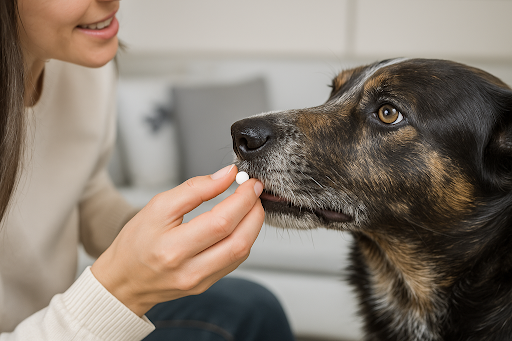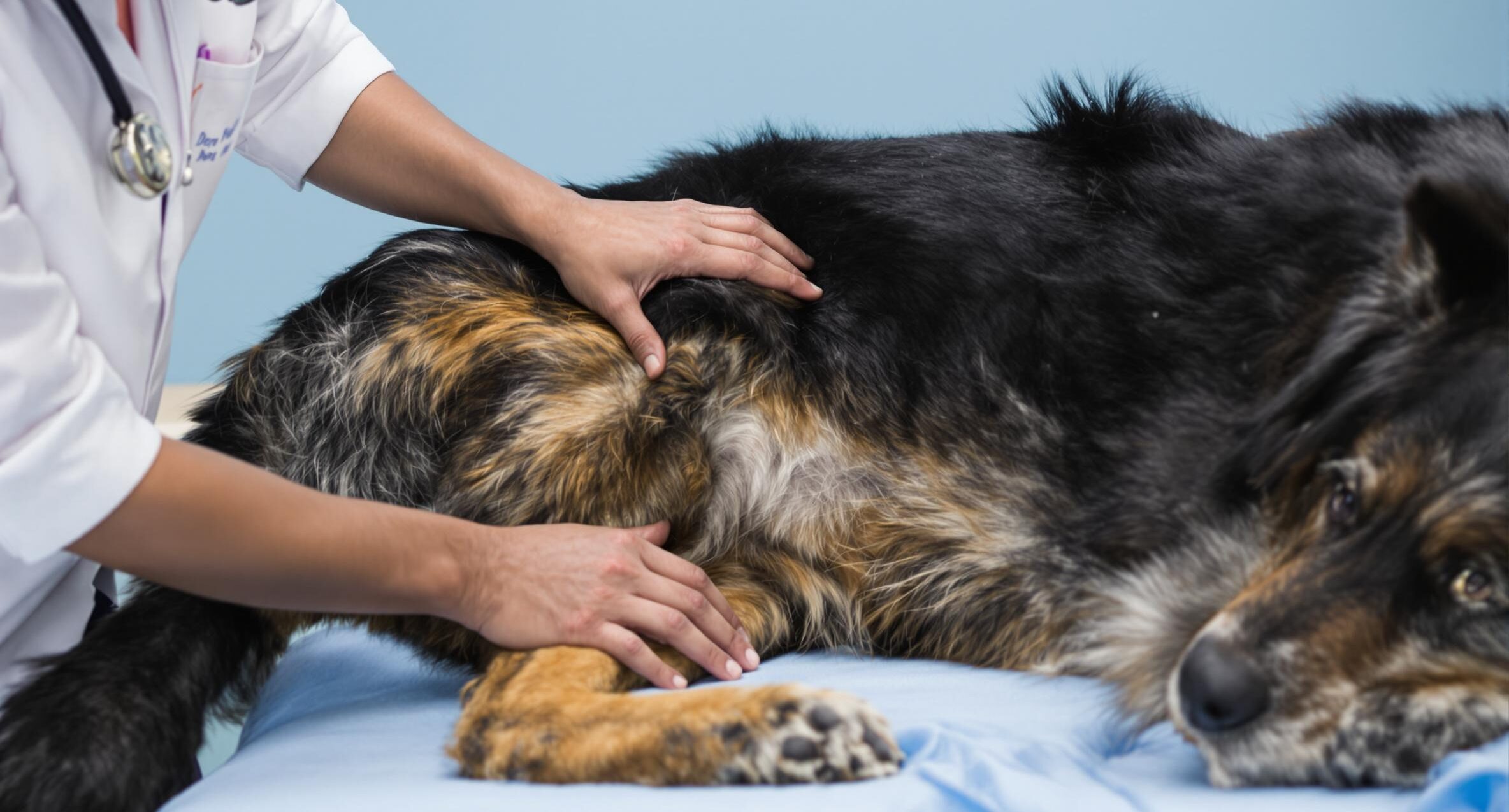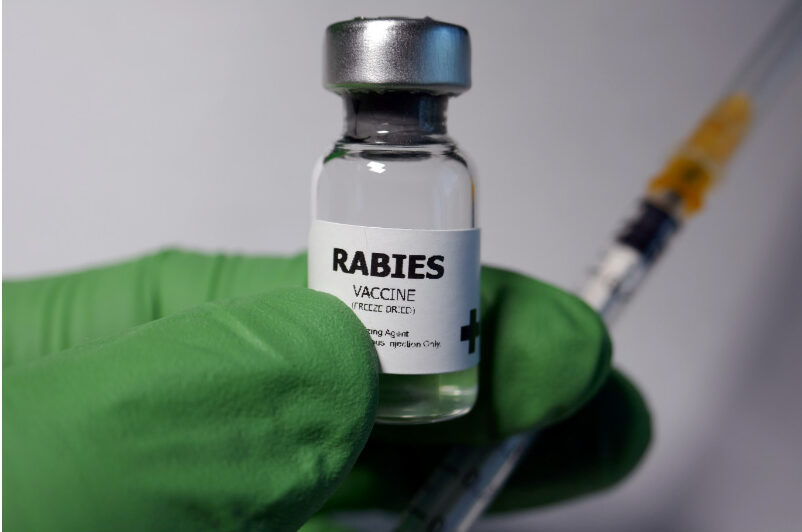Understanding Hot Spots: A Guide to Flea Allergy Dermatitis in Pets

Key takeaways:
- Flea allergy dermatitis causes severe discomfort in pets, and cases have increased over the past decade.
- Early recognition and treatment of flea allergy dermatitis can prevent more severe skin issues and improve your pet’s comfort.
- Comprehensive flea prevention and skin care, including veterinary guidance and natural remedies, are crucial for managing and preventing flea allergy dermatitis.
When your pet just won’t stop scratching, it could be more than just a passing itch. Flea allergy dermatitis (FAD) is a common condition that can make your dog or cat miserable if left unmanaged. These itchy flare-ups often start with a single flea bite and can quickly lead to painful hot spots. While symptoms tend to increase during warmer months, pets can suffer from flea allergies year-round.
If your dog or cat shows skin irritation, it’s worth looking closer. Combining flea protection with regular grooming, prompt veterinary care, and gentle at-home support gives your pet the best chance at lasting relief. At PetHealthMD, we help you understand your flea prevention and skin care options so you can make informed decisions with your veterinarian.
What are hot spots and flea allergy dermatitis?
Flea allergy dermatitis is a skin reaction caused by a pet’s sensitivity to flea saliva. While not all pets are affected, those that are may react to just one or two flea bites with intense itching and irritation. When your pet scratches, licks, or bites the itchy area, they can create open sores known as “hot spots.”
Hot spots are raw, red patches that appear suddenly and worsen quickly. Dogs with thick coats or long fur are especially vulnerable, since moisture can get trapped against the skin, encouraging infection. Once the skin’s natural barrier is broken, bacteria can easily cause further irritation and infection.
Even a small number of fleas can trigger this cycle of discomfort. Since fleas are present year-round in many environments, consistent protection is essential to keeping FAD under control.
How to recognize hot spot symptoms early
Early signs of flea allergy dermatitis and hot spots are often easy to miss, especially if your pet grooms frequently. However, staying alert to the following hot spot symptoms can help you avoid the problem before it worsens.
Common signs include:
- Red, inflamed patches of skin, especially on the back, tail base, or thighs
These irritated areas are often the first visible sign of discomfort. In pets with FAD, the skin may appear bright pink or red, indicating inflammation caused by an allergic reaction to flea saliva. These patches often show up where fleas like to bite—on the lower back, tail, or inner thighs—and can become more pronounced over time if left untreated.
- Moist or oozing areas that seem painful or warm to the touch
Once your pet licks or scratches inflamed skin, it can become raw and develop open wounds. These areas, sometimes called “hot spots,” may ooze fluid and feel warmer than the surrounding skin—a sign that the body’s immune response is actively working in that spot. These lesions can spread rapidly and are prone to infection without prompt care.
- Hair loss or bald spots around irritated areas
As your pet continues to chew or scratch at the same spots, fur in those areas may fall out or break off. This results in patchy or thinning fur that reveals the underlying irritated skin. Hair loss is often a sign that the condition has progressed for a while and needs veterinary attention.
- An unpleasant smell from the skin, indicating a possible infection
If the skin begins to smell sour, musty, or unusually strong, it may be a sign that bacteria have entered the damaged skin. This is common in hot spots that stay moist or aren’t healing properly. The odor often develops before more obvious symptoms of infection, like pus or swelling, appear.
- Small black specks in the fur (often flea droppings, or “flea dirt”)
These tiny grains may look like pepper flakes but are actually flea feces—dried blood left behind by fleas after feeding. You’ll most often find them along your pet’s spine, neck, or around the tail. To check if the specks are flea dirt, place them on a damp paper towel—if they turn reddish-brown, they’re from fleas.
- Swelling or raised skin in the affected zones
When inflammation becomes severe, the skin may swell or form small bumps. These raised areas can be tender and may indicate that the immune system reacts strongly to allergens or a secondary infection develops. Swollen skin might also signal that an abscess or more serious issue is forming beneath the surface.
Behavioral signs to watch for:
- Excessive licking, biting, or scratching
- Avoiding touch or becoming sensitive to grooming
- Seeming restless, anxious, or uncomfortable
- Obsessively grooming one area over and over
If your pet is showing any of these symptoms, reach out to your vet. A complete exam, simple skin tests, and a conversation about your pet’s health history can help guide the right treatment plan. Sometimes, your vet may recommend allergy testing to better understand your pet’s sensitivities.
How to treat and prevent hot spots and flea allergies
Healing hot spots and preventing future flare-ups often requires a combination of treatments. Your vet can guide you in building a plan that brings quick relief while reducing the chances of another outbreak.
To help your pet feel better fast, your vet may recommend:
- Medicated shampoos, sprays, or cleansing wipes to calm inflamed areas and remove allergens from your pet’s skin. These treatments also help wash away bacteria and prevent new infections from forming.
- Prescription anti-itch medications or allergy relief designed to reduce your pet’s urge to scratch and bite irritated areas. Depending on the severity of symptoms, options may include oral tablets, topical ointments, or even injectable medications.
- Antibiotics to treat secondary infections caused by broken skin or excessive licking. These may be given topically or orally to ensure healing from the inside out.
- Fast-acting oral flea treatments that kill adult fleas within hours. These are especially helpful when your pet needs immediate relief and can be used alongside longer-lasting flea preventives for ongoing protection.
To prevent future issues:
- Use year-round flea prevention products to protect your pet even when fleas seem less active. Fleas can survive indoors and become a year-round threat, especially in warmer climates or well-heated homes.
- Wash your pet’s bedding and vacuum your home weekly, especially in areas where your pet spends time. Regular cleaning removes flea eggs, larvae, and environmental allergens that can irritate your pet’s skin.
- Inspect your pet’s skin and coat regularly during grooming sessions. Catching early signs like redness, scabs, or excessive scratching gives you a head start on treatment before the issue worsens.
- Schedule veterinary checkups every few months, particularly if your pet has a history of skin allergies. These visits allow your vet to monitor progress, adjust treatments, and recommend preventive care based on seasonal risks.
With consistent attention and support, many pets can live comfortably even with flea allergies. Preventing bites before they happen is the most effective way to avoid painful reactions. And when your pet does have a flare-up, early intervention helps speed up healing and prevent complications.
Home care that supports healing from FAD
In addition to medical treatments, gentle home care can ease discomfort and support your pet’s healing process. These natural approaches are best used alongside your vet’s plan, not as a replacement.
- Apply a warm, damp cloth to the area for a few minutes to relieve irritation.
- Gently pat dry with a soft towel—keeping skin dry prevents further breakdown.
- Use a small amount of pet-safe coconut oil to soothe irritated spots.
- Prevent scratching with a comfy recovery collar while your pet heals.
- Brush your pet often, especially around areas they like to scratch.
- Try a dab of pure aloe vera gel made for pets to reduce inflammation.
Ask your vet before trying any new product, even natural ones. A little support at home can go a long way in helping your pet feel better faster.
Frequently asked questions (FAQs) about hot spots and flea allergy dermatitis
Can flea allergy dermatitis affect indoor-only pets?
Yes, even pets that stay indoors full-time can develop flea allergies. Fleas can hitch a ride on clothing, shoes, or other animals. That’s why regular flea protection is still essential for indoor pets.
Is it safe to bathe my pet during a flare-up?
Yes, but only with gentle, vet-approved shampoos for sensitive or inflamed skin. Harsh or heavily fragranced products can make symptoms worse. Your vet can recommend a bathing routine that soothes the skin without over-drying it.
What’s the difference between flea allergy dermatitis and food allergies?
Flea allergy dermatitis is triggered by flea saliva, while food allergies are reactions to specific proteins in your pet’s diet. Both can cause itching and skin irritation, but the location of symptoms and response to treatment can help your vet tell them apart.
Can I use the same flea treatments for all my pets?
Not always. Flea preventives are often species-specific and based on weight. What works for a dog might harm a cat, and vice versa. Always follow your vet’s guidance and avoid sharing medications between pets unless advised.
Protecting your pet’s skin health

Healthy skin makes a world of difference in your pet’s comfort and happiness. Whether treating a current flare-up or looking to prevent the next one, combining consistent care at home with professional support helps your pet feel their best.
You don’t have to figure it out alone. PetMeds makes it easier to stay on top of your pet’s skin health with vet-trusted flea preventives, soothing skin care options, and prescription treatments delivered right to your door. Talk to your veterinarian, stock up on the essentials, and help your pet enjoy calm, itch-free days ahead.





